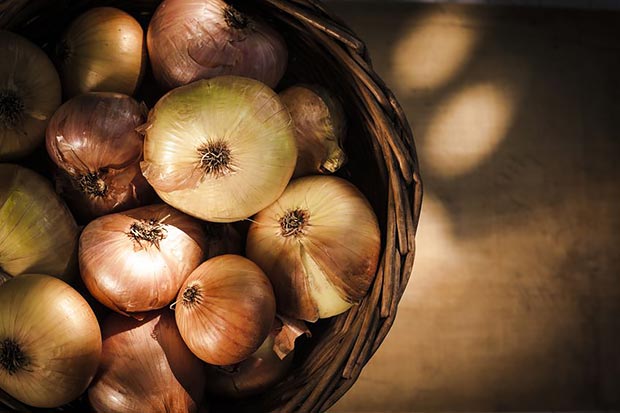In preparing against eventualities, it is important to be aware that incorrect storage and cold weather can wreak havoc on your stockpile.
While you are busy getting your emergency items ready, here are a few lifeless enemies that are lurking around to make a mess of your efforts.
Moisture
Cans and perishable items should be stored in a cool dry place away from moisture. Exposure to moisture may cause your cans to rust, thereby predisposing them to spoilage.
Your stockpile should be kept away from locations where the temperature is likely to reach below freezing point. As much as possible, keep your stockpile in the basement or an indoor room.
If you must store your items in a garage, make sure they are well insulated by using plywood or pallets beneath and above your stockpile. Try as much as possible to build around the pile to prevent moisture from getting to them.
Another option would be to use old blankets and newspapers to cover your stockpile to prevent spoilage. If your canned foods exhibit any of the following appearances, it is likely they have been exposed to moisture and have spoiled as a consequence; bulging lid, milky liquid, rusting at the edges of the can, corrosion, slimy texture, rancid odor, mold and off smell.
Exposure
This strictly applies to stored water. If you are going to store water in any quantity, make sure it is at least covered to protect it from spoilage. Even in times of emergencies, water safety should be a top priority.
Storing water in open containers without covers can attract mosquito larvae and other life forms like algae; these make it unfit for drinking and other domestic purposes. You need pure water to survive in emergency situations without adding disease pathogens into the mix. It is best to keep your water covered at all times.
{adinserter bph}Your stored water should be obtained from clean and uncontaminated sources and then sealed and covered for optimum safety. Using nonfood grade materials to store your drinking water may also cause some of the materials to leach into the water.
For example, lead in water containers can easily make your stored water poisonous. The rule of thumb here is to make sure that your storage containers are made from food grade materials like glass, stainless steels and food grade plastic gallons
Lack of space
If your entire stockpile is cramped together in some little space, there is every chance that you will have a snowball reaction on your hands.
Imagine placing your water, canned foods, dried foods and other emergency stockpile in a 2×2 meter space with your canned foods going on top of your storage water facilities. You are simply asking for trouble if this is the case. There is every probability that heat and humidity will quickly set in and spoil your stockpile in a split second.
It is important that your stockpile has as much space as possible to enable it to breathe. Keep your perishables as close to the floor as possible and canned food should be stored closer to the top of the shelf. Keep your items away from sunlight as this will facilitate spoilage.
If space is going to be a problem, make shelves that will hold your stockpile at different sections. Your stockpile should be kept in a cool dry place.
Inadequate Shelf Life
The shelf life of your canned foods is very important. Foods and other perishables with their expiration dates close by will quickly deteriorate sooner than you expect.
It is far preferable to have foods that are dehydrated with little to no water content as these can last up to 25 years with proper storage.
Change canned foods regularly as their expiration dates draws near by rotating your stockpile.
Keeping foods in airtight containers should help to prolong their shelf life.
Not storing the right foods
Storing the right kinds of foods is very important in case of emergencies. Not storing the right kind of foods can lead to disaster.
For example, dried or canned milk, honey, salt, dried beans and wheat are usually advised for emergency stockpiles. On the other hand, consecutive wheat meals are not entirely good for the human body.
It is advisable to have a variety of foods available in your stockpile and not rely on a particular food staple.
Include foods that no one in your family or group is allergic to. Your body needs all the nutrients it can get, so don’t short change yourself. Considered having a variety of foods such as powered eggs, dehydrated and freeze dried foods, canned foods and grains.







































































In addition, you should store what you know howto cook, as a collapse scenario is no time to be learning how to cook anything.
Further to the comment about knowing how to cook what you store, you should store what you like, and be sure that the additives that will make it taste not only good but delicious are also stored. Water for cooking, spices, hot sauce, sugar or sweetener, condiments like ketchup and mustard of your choice should also be stocked. About every six months, to help rotate stock and also to prove to yourself and your family that you are capable of surviving, stop using what is in your house on Friday evening, and eat, sleep and drink from your survival gear. That will show you where the weak spots are. Make notes for every time you have to use anything in your home, or even worse when you simply MUST go and buy something that is missing. You should also have a battery powered TV, a couple of radios, walkie-talkies, and LOTS of lanters, flashlights, headlamps and area light that works without your household current. Do it to prove you can, and then when you and your family NEED to, you will KNOW you can !
At the least this is more enlightening than one of those reality TV stars, kim who?
Joey what?
At least this is more instructive than one of our reality Television stars,
kim who? Joey what?
In the top 10 of the favorite content pieces, thanks!